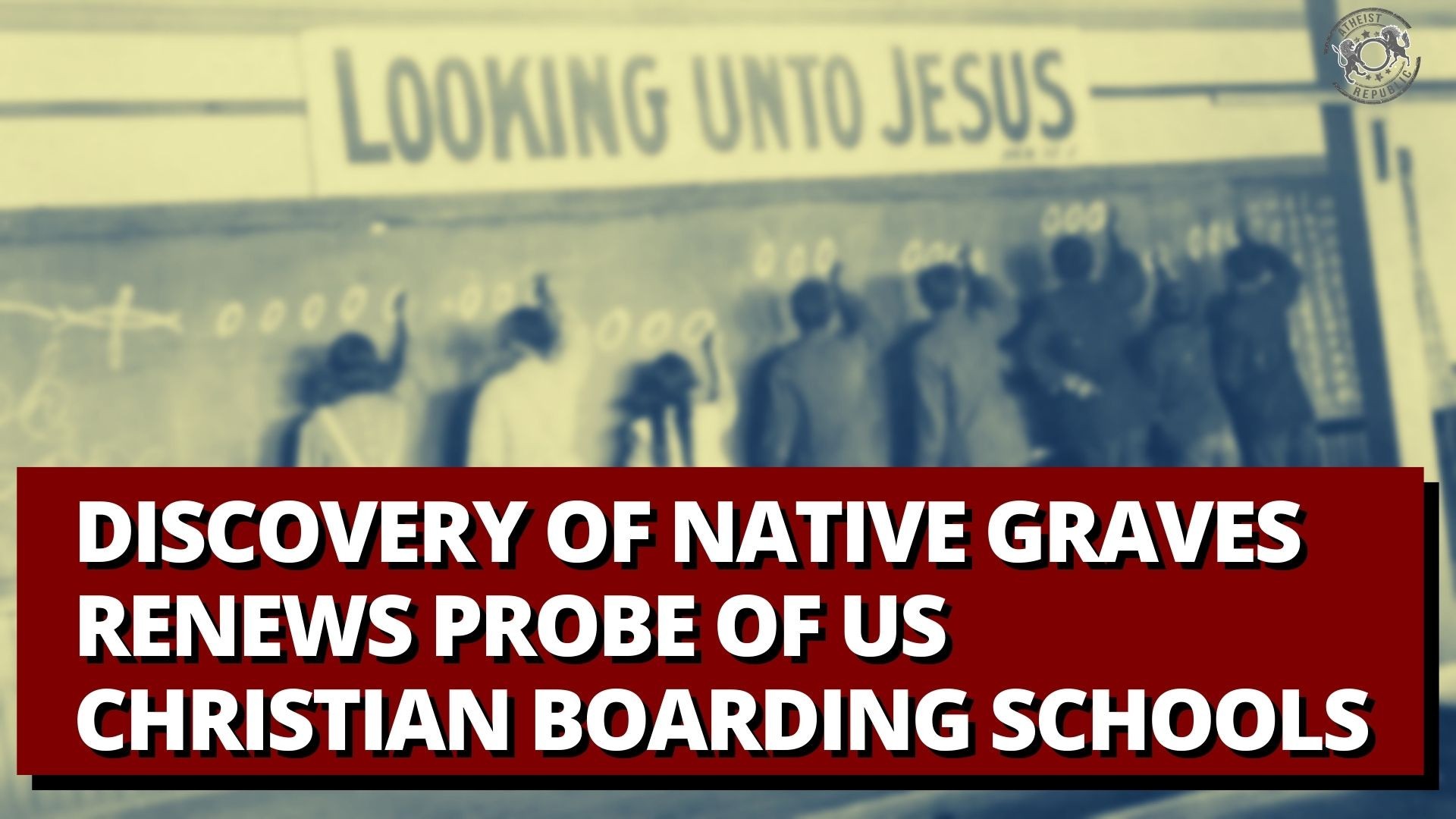
From the 19th to 20th centuries, Canadian churches operated at least 150 boarding schools for children of aboriginal tribes. Officials have exposed hundreds of unmarked graves on the surrounding properties. Approximately 150,000 native children attended these schools for more than a century. Sadly, the National Truth and Reconciliation Commission in Canada determined 3,201 native children died due to unsatisfactory conditions, malnourishment, and abuse.
There are mass graves of Native children at old boarding schools in the United States.
Marsha Small, a grad student, used ground-penetrating radar to survey beneath Chemawa Indian School in Oregon. She found hundreds of unmarked burial sites. https://t.co/mB93D3LFt5
— Ruth H. Hopkins (Red Road Woman) (@Ruth_HHopkins) June 14, 2021
These recent discoveries alerted the United States to revive investigations into similar boarding schools, many of which were operated by Catholic and Protestant churches, and the horrific abuses on American soil. According to researchers, the churches have managed more than 150 residential boarding schools since the 19th century.
The Civilization Fund Act was passed in March of 1819, more than two hundred years ago. This Act was followed by an era of Indian boarding schools, lasting from 1860 to 1978, by asserting that the Native American language and culture were the cause of the United State’s “Indian problem.”
Alaskan Native and Native American children were routinely separated from their tribes, including their families, customs, and languages. By coercing them into these schools, the children were forced to assimilate their lives into the Christian white man’s world. These expectations included dressing and grooming the same — and they were forced to become Christians.
Students attempting to speak their native language were punished. The schools discouraged contact with community and family members or forbade them entirely. Some survivors described the physical and sexual abuses they endured at the schools. Students were frequently deprived of adequate food and medical needs to the point that many perished. The students’ parents were often not informed of their deaths until they were already buried in the school cemeteries in unmarked graves.
Some of the churches in the United States have been trying to reconcile their history of carnage and brutal human rights offenses through apologies, ceremonies, and investigations. Other churches are only just beginning to scratch the surface of their dark past. Advocates advise that the churches must open their archives, help former students and their relatives tell their stories, and inform the public how these families were inflicted with traumas and tragedies — all in the name of the Christian faith.
The United Church of Canada operated 15 boarding schools, and they have opened its archives to help identify burial sites and apologized for its role in the genocide.
Deb Haaland, Secretary of the Interior, was compelled to write about her family’s experience in the United States after hearing about the remains of 215 Indigenous children found at a former residential school in Canada.
Similar to Canada, the “United States also has a history of taking Native children from their families to eradicate our culture and erase us as a people,” wrote Haaland in an op-ed with the Washington Post. She added, “I am a product of these horrific assimilationist policies.”
Spurred by the gruesome discovery at a school in Canada, where children as young as three were buried on the grounds, Haaland publicly declared plans to investigate the “troubled legacy of federal boarding school policies.” She wrote about her own family’s ordeal with boarding schools, including her great-grandfather, who was ‘schooled’ at Carlisle Indian Industrial School of Pennsylvania.
“The lasting and profound impacts of the federal government’s boarding school system have never been appropriately addressed.”
Haaland is also the first Native American to serve the United States as a cabinet secretary.
Samuel Torres, Director for the National Native American Boarding School Healing Coalition, a private group formed to focus attention on the traumas caused by the institution, stated that church apologies are a good start. However, “there is a lot more to be done” to educate the public and engage Indigenous community members.
Most Americans know very little about the schools, which is why Torres stated this education is essential to its role“as an armament toward the acquisition of Native lands” and its impact on Indigenous communities.
“Without that truth, then there’s really very limited possibilities of healing,” Torres said, who is a descendant of Mexica-Nahua ancestors, indigenous people from what is now known as Mexico.
